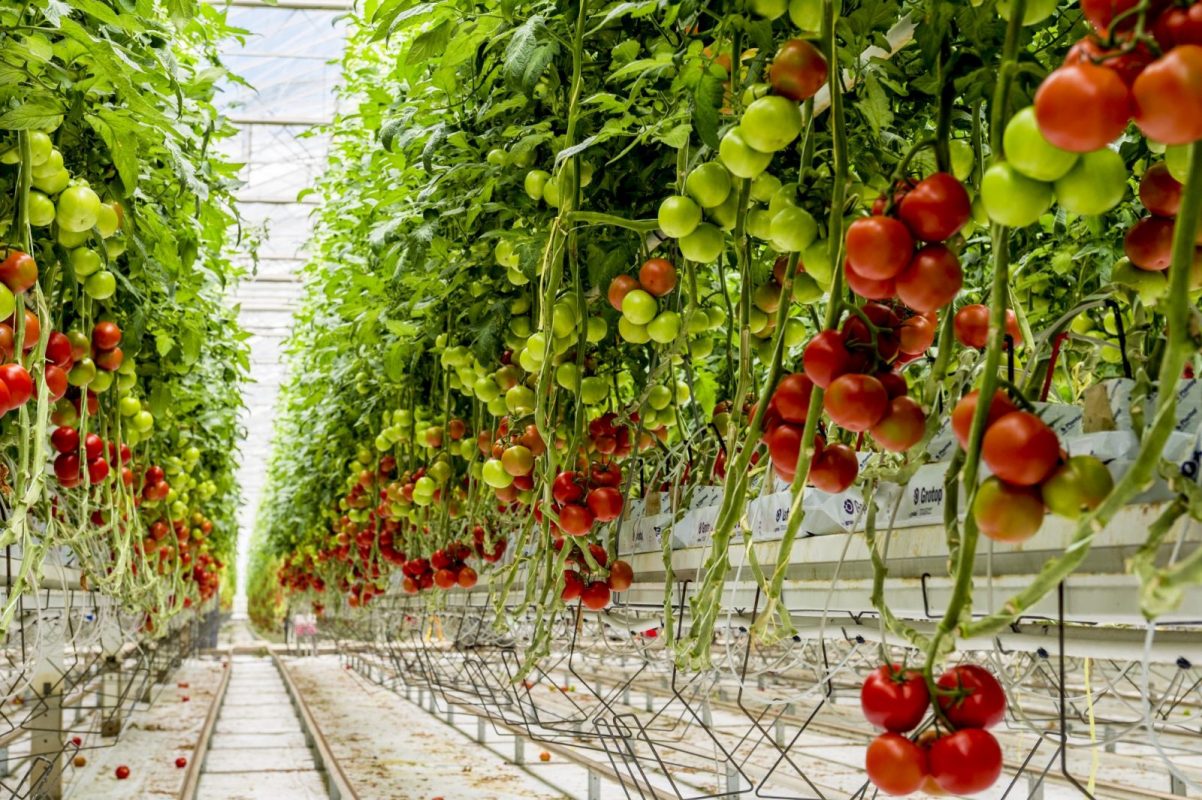The CRC’s ‘Tomato rhizobiome’ project’ is designed to further our understanding of microbial colonies in the root zones of hydroponically grown greenhouse tomato crops.
A stronger rhizobiome helps plants grow better, produce more fruit and show greater resilience to pathogens.
Once the project team has a better understanding about the rhizobiome of tomatoes grown in hydroponic media, they’ll use that knowledge to find ways to foster robust rhizobiomes in these plants.
All this will be of immense value to growers of hydroponic crops globally.
To date, project lead Dr Gal Winter and industry-embedded PhD student Phil Thomas have set up trial plots of hydroponic tomatoes in close collaboration with Costa Group. Thomas has been hard at work taking core samples from various parts of the trial plants’ root zones and working out a reliable method for extracting high-quality DNA samples from them.
Initial findings are “very promising”, says Costa Group’s Paul Butterworth.
University of New England’s Dr Winter is also happy with the team’s progress.
“To the best of my knowledge, this is the first-ever study that uses DNA metagenomics on hydroponic materials. And because it’s the first such study in hydroponics, there’s not a lot of data in the literature,” she says, likening hydroponically grown plants’ rhizobiomes to a ‘black box’.
“Our main achievements to date include the establishment of an experimental glasshouse at UNE that was set up with substantial support from Costa growers; development of laboratory protocols for rhizobiome sampling and DNA analysis; and ongoing extensive rhizobiome sample collection at Costa Glasshouse,” she says.
“Preliminary findings revealed new avenues to explore the plant rhizobiome and the effects of probiotics treatments.”
There have been challenges, she notes. “Due to COVID-19 related issues, we’ve encountered difficulties with ordering lab equipment, particularly specialised equipment that is delivered from overseas. Other challenges were around developing successful sample handling protocols.
“These have been surmounted by good old scientific trial and error,” Dr Winter says.
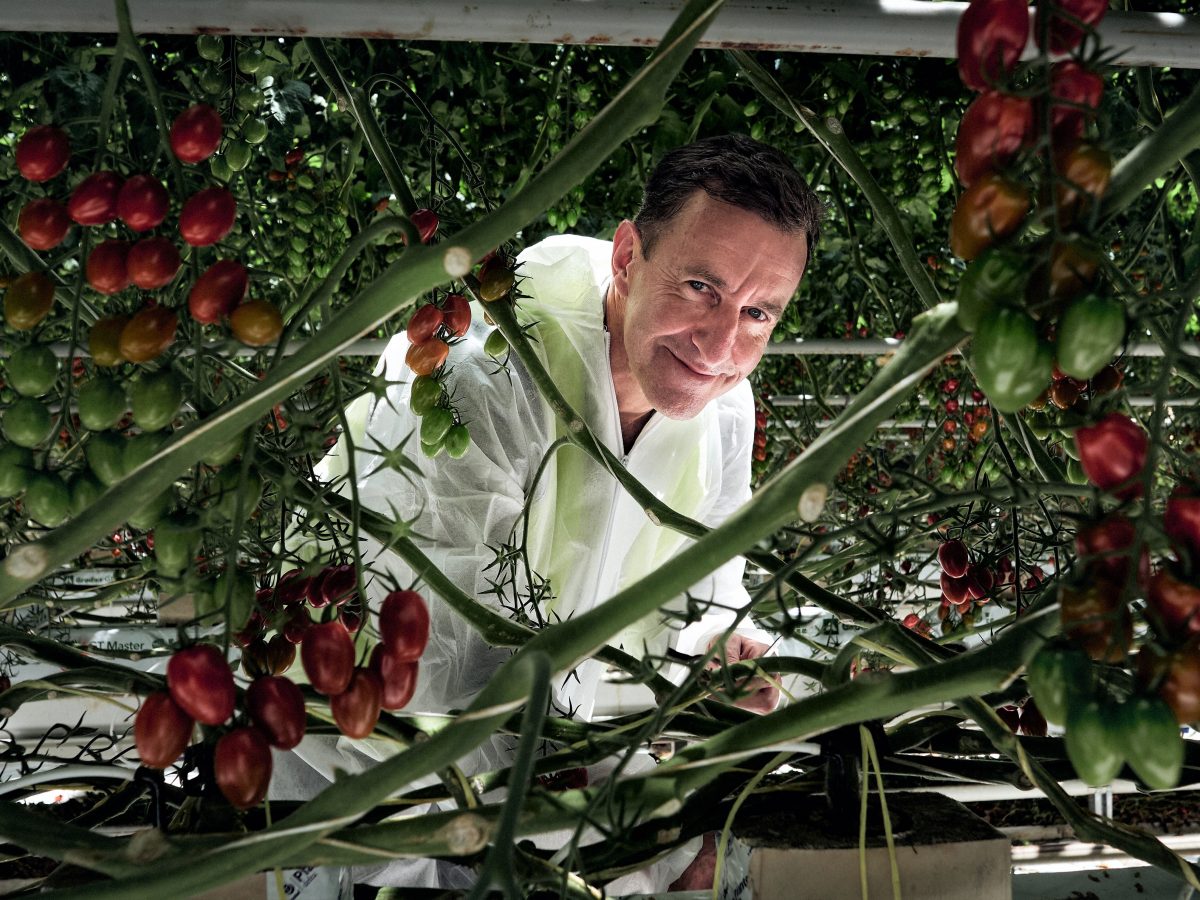
Phil Thomas, IT professional turned PhD student and project team member, in Costa Group’s commercial hydroponic tomato-growing facility, in Guyra, NSW. Credit: Matt Cawood, University of New England (UNE)
Phase 1 findings: a round-up
“Experimental treatment of the UNE glasshouse crop has been completed. Culture-based analysis has been done and samples have also been stored for later DNA extraction,” says doctoral candidate and project team member, Phil Thomas.
“In the lab, I have developed a protocol for sampling the microbiome on and around the roots which meets the quality and quantity requirements of our DNA analysis methods.
“Based on the review and initial findings from the UNE experimental crop, we are developing a conceptual model of the microbial ecology of the hydroponic system to use as a basis for experiments.
“I recently completed a review of related scientific literature and presented this to key Costa stakeholders. Soon, we will present these insights from the project to a wider audience of Costa growers and technical staff,” says Thomas.
“The next step in this process is to sequence the DNA and begin bioinformatic analysis to assess the information available.”
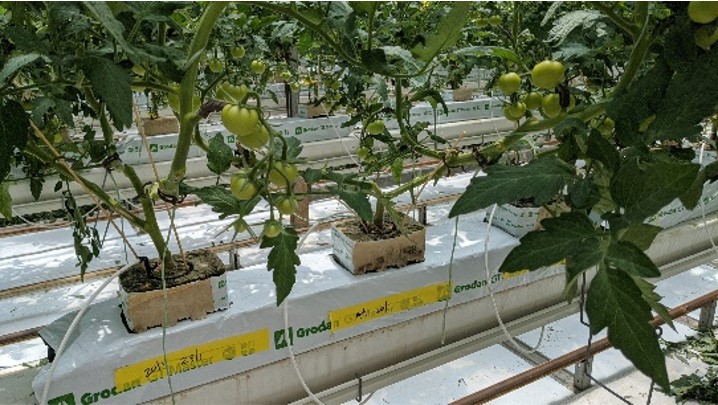
The trial tomato plant set-up in Costa Group’s Guyra glasshouse “that emulates Costa’s standard hydroponic system at the facility”, Dr Gal Winter explains. “Our trial plot at UNE is a similar set-up.” Credit: Phil Thomas/ UNE
The challenge: unlocking the ‘black box’ of the hydroponic plant’s rhizobiome
“Hydroponic media are very different from the soil environment,” Dr Winter explains. “Crops grown in soil get all the nutrients from the soil, and it is very, very rich in microorganisms. The hydroponic medium used by Costa Group – rockwool – is pretty much the opposite of that: it is basically devoid of microorganisms. It’s challenging to study what’s in the root zone of hydroponic plants, because there isn’t a lot.
“The challenge is, How do we get a population of microorganisms [in that hydroponically grown plant’s root zone] to support the plant? So the initial questions we’re asking are: What’s there? How does it get there? And what does it do to the plant?
“We’ve gone about it in two ways. Firstly, by setting up an experimental glasshouse at UNE that allows us to experiment with different probiotic treatments for the plants. Later, we can use this to test for different pathogens – by introducing pathogens into the root zones of our trial hydroponically grown tomatoes to see if the probiotic-treated plants handle them differently.
“Secondly, we have set up trial plants in a ‘sample slab’ at the Costa Group glasshouse facility in Guyra that emulates Costa’s standard hydroponic system at the facility; with these, obviously we don’t create any interference – we just see what is there [interventions – such as introducing pathogens, for example – could jeopardise Costa’s commercial crop]. Our trial plot at UNE is a similar set-up.”
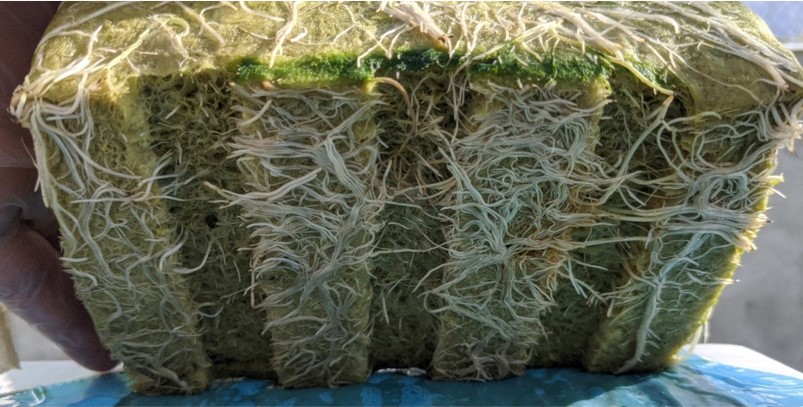
“The top block is a little cube, and then there’s the slab under it. We sample both roots and rockwool by drilling ‘core holes’ into the slab,” Dr Winter says. Credit: Phil Thomas/ UNE
Sampling the rhizobiome: DNA analysis
“We sample the root zones of the trial plants by drilling ‘core holes’ into the slab, taking the rockwool and roots. Initially, we’re sampling every part of the root zone so we can ascertain what part to sample later. Because the root system, particularly in hydroponically grown plants, is huge.
“We suspect that certain parts of the root zone are more important to the plant than others. Then you have the questions: Which part of the root zone is the important one? Which part influences the plant?
“From these samples, we can ascertain the [hydroponic root zone’s] microbial community through DNA analysis. But rather than employing ‘classic microbiological methods’ – creating cultures, putting them on plates, then examining these under a microscope – we’re using a cutting-edge technique known as metagenomics. It is the most advanced technique available today.
“It basically takes the DNA and, through DNA sequencing, identifies a genome of everything that’s there – all the microbes. We use a piece of equipment known as a MinIon to do this advanced DNA sampling. The device is so small it could fit in the palm of your hand – it’s amazing.
You need considerable skill, both to use the equipment itself and to interpret the results, Dr Winter says. “So that was our next challenge. And the result of that process is our main progress to date.”
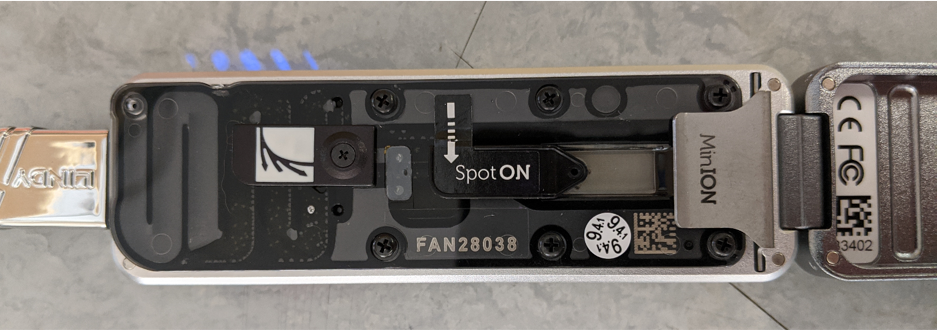
We use a piece of equipment known as a MinIon to do this advanced DNA sampling. The device is so small it could fit in the palm of your hand,” says Dr Winter. Credit: Phil Thomas/ UNE
Getting a high-quality DNA sample
“So when you’ve taken the core sample, you have to get all the DNA from it. But we are only interested in the microbial DNA, so our extraction has to be very very delicate, very targeted, to remove ‘sample interference’ without degrading the microbial DNA. You also have to be careful because with every purification step, you lose some of the DNA, and you need a pretty high concentration of high-quality DNA to be able to do this analysis.
“Basically, the sampling has to be very specific to eliminate molecules such as proteins, solvents and other inert compounds from the rockwool, plant material et cetera – because they will interfere with the reading. And because the hydroponic system is designed to grow tomatoes rather than for DNA extraction, there are a lot of interferences in the system that we had to work out how to purify. So there are a lot of steps involved in purifying the DNA.
It took a long time and involved a lot of effort from Phil to get there. There are measurements we can take to identify the DNA quality – he tested so many things. Now, thanks to Phil’s hard work, we finally have a reliable method for producing quality DNA – and this method is the best available today.
“To the best of my knowledge, this is the first-ever study that uses DNA metagenomics on hydroponic materials. And because it’s the first such study in hydroponics, there’s not a lot of data in the literature.
“So there is wide applicability, potentially, for use by hydroponic growers – and not just growers of tomatoes but of every hydroponically grown crop, everywhere.
“Once we finalise these results, we aim to publish our findings in scientific journals. We’re hoping to do this by the end of the year.”
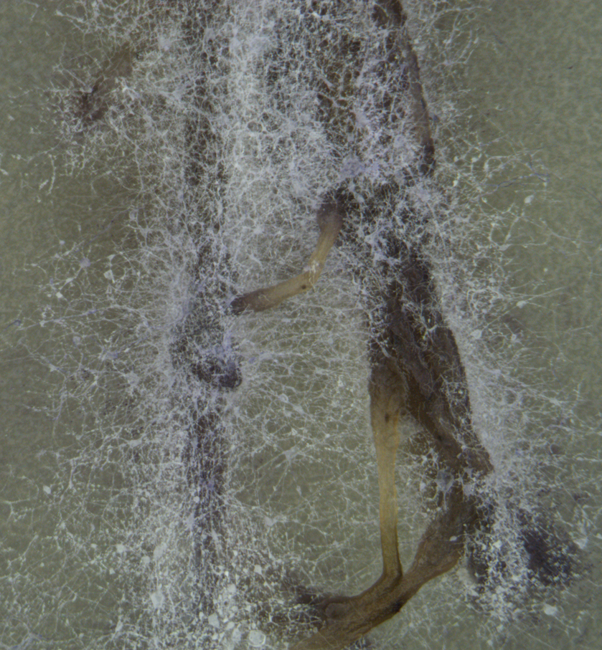
Microbial growth on tomato rhizobiome. Credit: Phil Thomas, University of New England
Sequencing the rhizobiome DNA
“Now we have the testing technology, we will continue to monitor the trial crops. Phil has invested a lot of time in setting up these crops, which are now at the ‘nursery’ stage. We’ll soon have an extensive sampling that will capture the lifetime of the crops. And now that we have a reliable way to get the quality DNA we need from these, we can sequence the DNA and find out what microbes are in there, and how these change over time.
“Then we can use that, along with other crop information that Costa monitors regularly, to help us to see how the tomato plant rhizobiome impacts the development of the crop, the fruit, and its susceptibility to pathogens.
“If Costa’s information told us that there was, say, an outbreak of a certain pathogen in the crop, we’d be able to correlate that with our information about the rhizobiome and see if the two are connected. If a pathogen was colonising the root zone, we could also see that in our DNA analysis. In the future, that could help growers to combat such outbreaks.
“The overarching aim, once we understand what’s in the hydroponic plant’s rhizobiome, is to work out how best to manipulate that for better plant health.
“Ultimately, that allows us to develop tools for hydroponic growers that enable them to analyse and understand their plants’ microbiomes on the go – and then say, Now I need to apply this or that treatment’ to strengthen their microbiomes.
“And our study is one of the first to do this sort of analysis.”
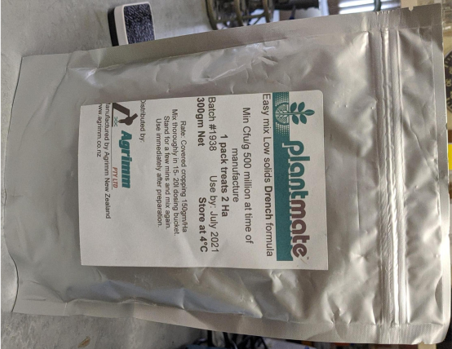
Plantmate, the probiotic treatment Costa Group applies to its hydroponically grown tomatoes. The project team is testing its efficamncy. Credit: Phil Thomas/ University of New England
Probiotic treatments and plant health: do they deliver?
The next stage of the project is to look at the impacts of probiotic treatments in hydroponically grown tomatoes. It’s another ‘black box’ challenge, Dr Winter says.
“At the moment, growers use them on a ‘wishful’ basis – pretty much like humans do, when we take probiotics: we’re not sure whether they’re actually having a positive effect, but we hope that they work,” she explains.
“But in an industrial systems, and especially one that is so controlled, you want to know more. Does it actually reach the plants’ roots, and does it do any good? Or are we wasting our money?
“To ascertain that, we’re using more classic microbiological techniques: growing samples on agar plates and examining them under the microscope.
“After application of the probiotic treatment [as used by Costa on its tomato plants, we waited a certain time, then grew a few roots in agar medium on a plate to see what microbes are there. You can see the presence of fungal hyphae – the white patches are a testament to the fact that the probiotic has made it to the roots and has colonised the roots.
“Whether it has done any good remains to be seen. To know, we must do an experiment comparing a treatment group with a control; then we can introduce a pathogen and see if the probiotic-treated plants show more resilience, better resistance to it. We’ll get to these experiments by the beginning of next year.”
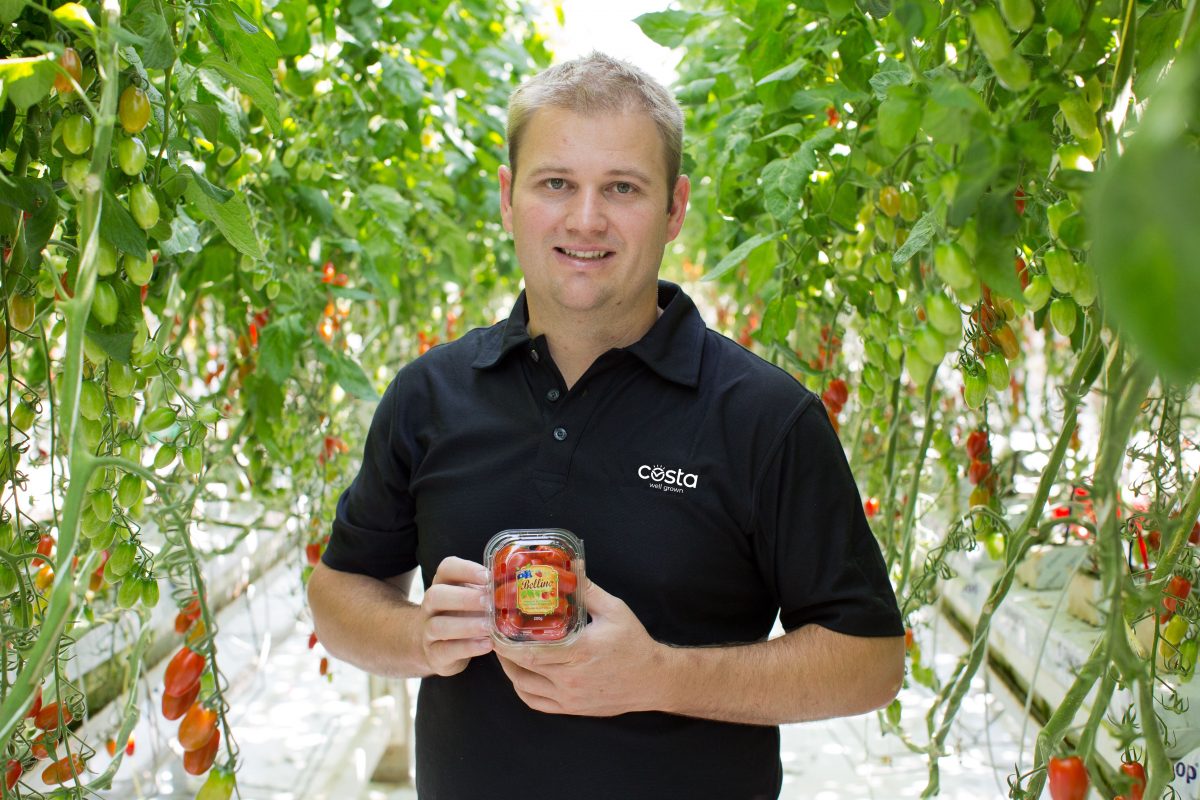
Paul Butterworth, Technical Manager at Costa Group’s Tomato Exchange glasshouse growing complex near Guyra, NSW, where Costa Group grows hydroponic tomatoes for markets nationwide. Credit: Costa Group
Costa Group perspective
“From Costa’s perspective, the collaboration with all stakeholders around this project is going well. There are regular update meetings, so once a month we get a snapshot of the project. These update meetings are also an opportunity for Costa to have input into the project,” says Costa Group Technical Advisor Paul Butterworth.
“Phil, the student involved in the project, has frequent site visits to sample the commercial crops. These offer another opportunity for the Costa team to stay up to date with the project and its progress.
“Recently we had a three-hour presentation by Phil, summarising his work to date. That was a great session. We saw some very promising initial results, learned about the lack of published international research in the field, the technical challenges, the opportunities and the next steps.
“Overall, we believe the project is progressing nicely and the information already coming from the project is having an influence on how we look at our crops. Exciting times ahead!”
Some of the promising initial results called out by the team include the creation and demonstration of an effective sampling method to test the probiotics within the rootzone of hydroponic tomatoes; and the demonstration of probiotics persisting in the rootzone of hydroponic systems for a period of time – currently tested at 19 days from inoculation. “Previously, we were unable to even know if the probiotic had made it to the root zone,” notes Butterworth.
“Initial results have indicated little to no DNA within the root zone of hydroponic systems, suggesting a sterile root zone; and that the microbiome load is different throughout the root zone: more specifically, that there’s a higher load in the block and less activity in the slab.”
The initial results of the project may lead to some valuable opportunities, Butterworth says. The findings could, potentially, change in the way probiotics are introduced to the root zone.
“Changing the application method and timing could see greater benefits to the plants,” he explains. “For example, introduction [of probiotic treatments] at the nursery stage may see greater benefits, rather than application at mature cropping stages.
“With an effective sampling and testing protocol,” Butterworth adds, “we could start to investigate other theories about root zone health – for example, do probiotics help against known pathogens within hydroponic systems?”
Next steps
Next steps in the project include:
- completion of 12-month sampling from an entire cropping cycle, currently approximately six months through collection;
- ‘big data’ analysis of the data;
- an examination of changes to tomato trial plants’ root microbiome over time to help us better understand what is happening with the crop; and
- potential improvement of the techniques and protocols for sampling, extraction and analysis of the root zone.


